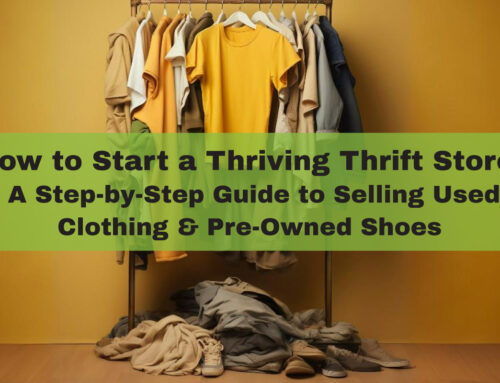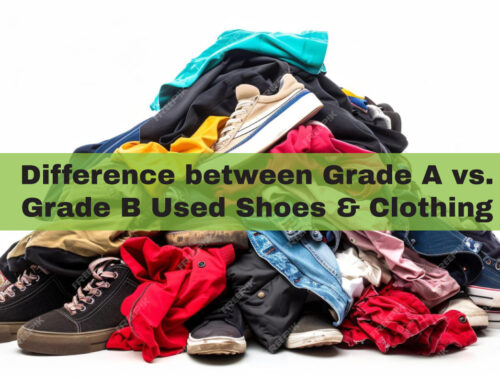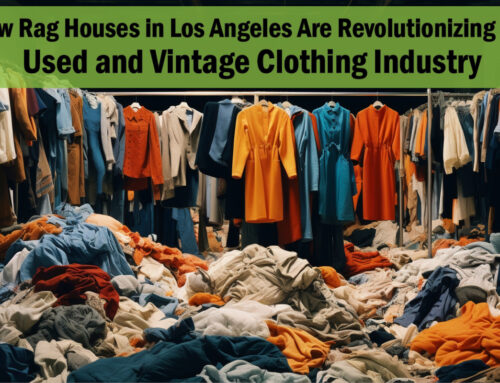If you do a quick Google search on used clothing, you will soon realize the stigma surrounding this niche. Blog streams, national papers, universities, and trade-specific publications are all voicing their dislike for the unethical practice of sending used apparel to the landfills. And interestingly enough, perhaps because it has been an ‘accepted way of doing things’, this practice has continued for many decades.
However, slowly but surely, the global frame of mind is undergoing a drastic change. Pressure from environmentalists and documentary series like The Blue Planet has highlighted the seriousness of plastic. This has impacted how both people and companies/businesses manage plastic waste. For example, Burberry faced enormous backlash when it burned unsold items.
Environmental protestors and protests have increased in popularity and frequency. However, only a percentage of the population and companies are taking clear steps to promote a lifestyle change. It is this handful of people who are looking for ethical retail choices. They are not interested in ethically-produced new items, but the options with the smallest carbon footprint: used clothing and shoes.
Is buying pre-owned items the next new trend in retail? Are we going to reach a point where retailers will champion their used shoes and clothing selection?
Here are our predictions for the clothing and footwear resale market in the future:
Resale clothing is here to stay.
Even though the coronavirus pandemic upended most of the retail industry and dampened apparel sales, the used clothing market is expected to prosper. Also called resale or second-hand apparel, this market is currently valued at nearly $28 billion. It is expected to reach $64 billion dollars by the year 2025; Surprised by this growth trend?
The resale clothing market has grown 25 times faster than the retail market in the past year. According to ThredUp, in 2019, nearly 64 million people purchased second-hand items.
In 2020, many experts had cautioned that consumers might hesitate on shopping for used apparel. It was assumed that the coronavirus lingered on clothing and could be transmitted via this route. However, the data doesn’t support this fear. In fact, the largest grader and exporter of used clothing and shoes in Los Angeles, California, Samiyatex, has continued to see a rise in the demand for second-hand apparel during the pandemic.
These resale market figures confirm that the used clothing industry is here to stay.
Used clothing will take up more closet space.
Second-hand fashion awareness is growing among young people. They are more aware of how careless fast fashion is. According to IMRG, an online retail association in the UK used clothing and shoes will take up nearly 17% of a person’s closet space by the year 2029. In 2009, this was just 3%. On the downside, department stores’ portion of closet space will decline to 7% by 2029. This will be a sizeable drop from 22%, only two decades ago.
In addition, America is currently facing a surging unemployment rate. So, you can expect more consumers who will shop on a budget. You can expect second-hand marketplaces like off-price retailers, vintage shops, and even Amazon’s fashion business to grow in the next few years.
More consumers will say ‘no’ to new clothing.
As more people become increasingly aware of the impact of clothing waste on the environment, the demand for cheap, resale clothing will grow. What this points to is, many people will lean towards an ethically conscious future by shopping for used clothing and shoes rather than new alternatives.
According to FACT-Finder, a consumer study was conducted on sustainable fashion in 2020 in the UK and US. This study found that 52% of shoppers want the clothing industry to adopt sustainable practices.
This concern is easy to understand. When clothing is thrown into the trash, 73% will either be buried in a landfill or burned. The remaining 12% is collected for recycling purposes, while 1% will be transformed into used clothing. It’s clearly time that we rethink what should happen to the clothes we wear after we’re done with them.
This sentiment has ricocheted in Amsterdam, where the last five years have seen a surge in vintage clothing shops. This clearly indicates that more and more people are becoming aware of the negative impact of the fashion industry on our environment. In fact, in Amsterdam, it has become a “cool” trend to purchase second-hand clothing.
Vintage clothing stores are only a part of the resale market. Many leading retailers and high fashion companies like Burberry and Stella McCartney are establishing partnerships with luxury consignment shops because they recognizing the potential of the resale marketplace. There is also growth in companies sourcing and recycling used shoes and clothing. Actually, several “green” clothing companies have popped up in the past few years.
Samiyatex is an established grader and exporter of second-hand clothing and shoes. Established in the Los Angeles area for nearly three decades, the company processes up to 800,000 pounds of used apparel each month.
With a whole community of sustainable clothing businesses thriving, growing, and making connections with established retailers, we can expect more consumers to turn towards used apparel. The used clothing revolution has already started. The resale market predictions for the next five years clearly indicate that we’re now entering the golden age of circular fashion.






